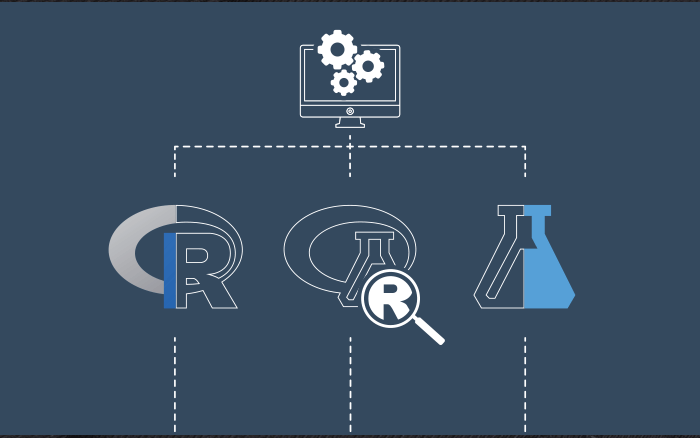
Sonar, short for Sound Navigation and Ranging, is a technology used to detect and locate objects underwater. It is commonly used in navigation, search and rescue operations, and military applications. In recent years, machine learning techniques have been used to predict the sonar signals and improve the accuracy of detection. In this article, we will go over the steps needed to create a Sonar prediction model using the UCI dataset in R.
The Sonar dataset from UCI (University of California, Irvine) is a collection of 208 observations and 60 features that are used to predict the presence of mines or rocks in the sea floor. Each observation represents a sonar signal, and each feature represents a measure of the signal’s properties. The dataset is divided into two classes: “M” for mine and “R” for rock. The goal of this dataset is to train a model that can accurately predict the class of a given sonar signal. The dataset is collected from the Guma Mine, in Cyprus and it’s labeled.
The dataset includes various features such as the frequency of the sonar signal, the time of the signal, and the amplitude of the signal. These features are used to train a model that can identify patterns in the data and make predictions about the class of a new sonar signal. The dataset is widely used to test the performance of machine learning algorithms in classification problems.
It’s important to note that the dataset is imbalanced, meaning that there are more observations in one class than in the other. This is a common issue in real-world datasets and can affect the performance of the model. Therefore, it’s important to consider this imbalance when evaluating the performance of the model and to use techniques such as oversampling or under-sampling to balance the dataset.
Overall, the Sonar dataset from UCI is a widely used dataset in machine learning and data mining research, it’s used to test the performance of various algorithms and techniques in classification problems. It’s a valuable resource for researchers and practitioners who want to gain experience in working with sonar data and developing models that can accurately predict the presence of mines or rocks in the sea floor.
The first step is to load the data into R. The UCI dataset contains information about the sonar signals and can be downloaded from the UCI website. Once the data is loaded, it’s important to make sure that the variables are in the correct format, such as numeric for continuous variables and factors for categorical variables.
The next step is to prepare the data for the model. This includes cleaning the data, handling missing values, and transforming the variables if necessary. It’s also important to split the data into a training set and a test set. The training set is used to train the model, while the test set is used to evaluate the performance of the model.
The next step is to choose a machine learning algorithm and train the model. There are various algorithms that can be used for Sonar prediction, such as logistic regression, k-nearest neighbors, decision trees and Support Vector Machine (SVM) algorithms. Each algorithm has its own strengths and weaknesses, and it’s important to choose the one that best fits the data and the problem at hand.
Once the model is trained, it’s important to evaluate its performance using the test set. This includes calculating the accuracy, precision, recall, and other metrics. If the performance of the model is not satisfactory, it’s necessary to adjust the parameters of the model or try a different algorithm.
Finally, the model can be used to make predictions on new data. It’s important to remember that the model is only as good as the data it was trained on, and it’s important to keep updating the model with new data and retraining it as necessary.
In conclusion, creating a Sonar prediction model in R using the UCI dataset is a multi-step process that includes loading the data, preparing the data, choosing a machine learning algorithm, training the model, evaluating its performance, and using the model to make predictions. It’s important to remember that the model is only as good as the data it was trained on, and it’s important to keep updating the model with new data and retraining it as necessary. The sonar prediction is a challenging task that requires a deep understanding of the data and the problem at hand. Machine learning techniques can be a powerful tool to improve the accuracy of detection, but they should be used in conjunction with other traditional diagnostic methods and must be evaluated by the professionals in the field.
In this Applied Machine Learning & Data Science Recipe (Jupyter Notebook), the reader will find the practical use of applied machine learning and data science in R programming: Sonar Dataset Prediction in R.
Disclaimer: The information and code presented within this recipe/tutorial is only for educational and coaching purposes for beginners and developers. Anyone can practice and apply the recipe/tutorial presented here, but the reader is taking full responsibility for his/her actions. The author (content curator) of this recipe (code / program) has made every effort to ensure the accuracy of the information was correct at time of publication. The author (content curator) does not assume and hereby disclaims any liability to any party for any loss, damage, or disruption caused by errors or omissions, whether such errors or omissions result from accident, negligence, or any other cause. The information presented here could also be found in public knowledge domains.
Learn by Coding: v-Tutorials on Applied Machine Learning and Data Science for Beginners
Latest end-to-end Learn by Coding Projects (Jupyter Notebooks) in Python and R:
Applied Statistics with R for Beginners and Business Professionals
Data Science and Machine Learning Projects in Python: Tabular Data Analytics
Data Science and Machine Learning Projects in R: Tabular Data Analytics
Python Machine Learning & Data Science Recipes: Learn by Coding